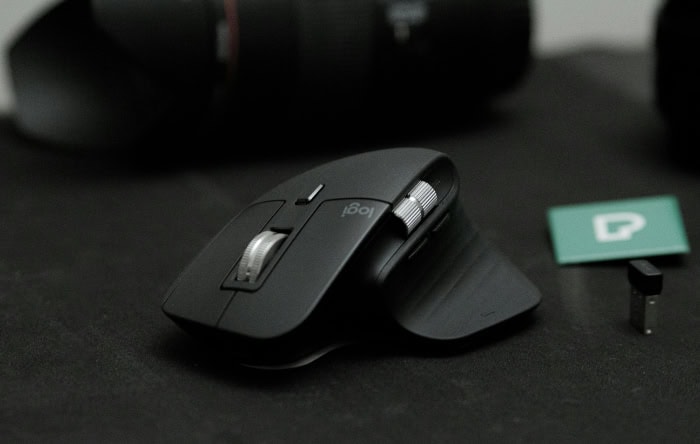Wired vs. Wireless Mouse: Choosing the Perfect Pointer

Your mouse is more than just a simple pointing device; it’s an extension of your hand that directly impacts your productivity, comfort, and overall computing experience. With the abundance of options available, choosing between a wired or wireless mouse can be a perplexing decision.
Each type offers distinct benefits and drawbacks that cater to various user needs and preferences. Wired mice provide a reliable, lag-free connection, while wireless mice offer the convenience of a clutter-free workspace and freedom of movement.
Factors such as performance, ergonomics, portability, and cost all come into play when deciding which mouse is right for you.
How Wired and Wireless Mice Work
To make an informed decision when choosing between a wired or wireless mouse, it’s essential to understand how each type functions. Wired and wireless mice differ in their connection methods, data transmission, and the technology used to track movement.
Wired Mice: USB Connection and Data Transmission
Wired mice connect to your computer using a USB cable. This physical connection allows for the direct transmission of data between the mouse and your computer.
When you move the mouse or click its buttons, the information is instantly sent to your computer via the USB cable. This direct connection ensures a reliable and stable signal, minimizing any potential for input lag or interference.
Wireless Mice: RF or Bluetooth Connectivity
Wireless mice, on the other hand, rely on either radio frequency (RF) or Bluetooth technology to establish a connection with your computer. RF mice come with a small USB receiver that plugs into your computer, allowing the mouse to communicate wirelessly.
Bluetooth mice, as the name suggests, use Bluetooth technology to pair with your computer, eliminating the need for a separate receiver.
Polling Rates and Response Times
Polling rate refers to how often the mouse reports its position to the computer. A higher polling rate means more frequent updates, resulting in smoother cursor movement and faster response times.
Wired mice generally have higher polling rates compared to wireless mice, although many modern wireless mice offer polling rates that are comparable to their wired counterparts.
Optical vs. Laser Sensors
Another crucial aspect of mouse functionality is the type of sensor used to track movement. Mice typically use either optical or laser sensors.
Optical sensors use an LED light to illuminate the surface beneath the mouse, capturing images of the surface texture to determine movement. Laser sensors, on the other hand, use a laser beam to track movement, offering higher sensitivity and the ability to work on a wider range of surfaces.
Performance Comparison

When choosing between a wired or wireless mouse, performance is a critical factor to consider. In the past, wired mice were often considered superior in terms of speed, accuracy, and precision.
However, advancements in wireless technology have narrowed the gap, making wireless mice a viable option for most users.
Speed, Accuracy, and Precision
Wired mice have traditionally been favored for their speed, accuracy, and precision. The direct USB connection allows for near-instantaneous data transmission, ensuring that every movement and click is registered promptly.
This responsiveness is particularly important for tasks that require quick reflexes, such as gaming or precise graphic design work.
Modern wireless mice, however, have made significant strides in terms of performance. Many high-end wireless mice now offer speed, accuracy, and precision that rival their wired counterparts.
With advanced wireless technologies and optimized sensors, the difference in performance between wired and wireless mice has become nearly indistinguishable for most users.
Input Lag and Latency
One common misconception about wireless mice is that they suffer from input lag and latency. In the past, wireless mice may have experienced slight delays due to the limitations of wireless technology.
However, this is no longer the case with modern wireless mice.
Many wireless mice now feature advanced wireless protocols, such as 2.4GHz RF or Bluetooth 5.0, which offer fast and stable connections. These technologies ensure that the data transmission between the mouse and the computer is nearly instantaneous, eliminating any noticeable input lag or latency.
In fact, many professional gamers and esports athletes now use wireless mice without any performance concerns.
Reliability and Potential for Interference
Another aspect to consider when comparing wired and wireless mice is reliability and the potential for interference. Wired mice have the advantage of a stable, wired connection that is not susceptible to interference from other devices or wireless signals.
This reliability makes wired mice a preferred choice for users who prioritize a consistent and uninterrupted connection.
Wireless mice, on the other hand, may be subject to potential interference from other wireless devices or signals in the environment. However, modern wireless mice have implemented advanced frequency hopping and encryption techniques to minimize interference and ensure a stable connection.
Many wireless mice also offer dual-mode connectivity, allowing you to switch between 2.4GHz RF and Bluetooth, providing flexibility and reducing the chances of interference.
Wireless Signal Stability Concerns
Some users may have concerns about the stability of wireless signals, especially in environments with multiple wireless devices. To address these concerns, manufacturers have developed wireless mice with advanced signal stability features.
These mice use intelligent algorithms to detect and avoid interference, ensuring a reliable and consistent connection even in crowded wireless environments.
Additionally, many wireless mice now come with receivers that can be stored inside the mouse when not in use, reducing the risk of losing or damaging the receiver. Some mice even offer the option to connect directly via Bluetooth, eliminating the need for a separate receiver altogether.
Convenience, Portability, and Ergonomics

When choosing between a wired or wireless mouse, it’s important to consider factors beyond performance. Convenience, portability, and ergonomics play a significant role in determining which type of mouse is best suited for your needs.
Cable Management and Clutter-Free Setups
One of the main advantages of wireless mice is their ability to provide a clutter-free setup. Without the need for a cable, wireless mice eliminate the hassle of cable management and the potential for tangled wires on your desk.
This is particularly beneficial for users who value a clean and organized workspace.
Wired mice, on the other hand, require cable management to prevent clutter and ensure smooth mouse movement. Some wired mice come with braided or rubber cables that are less prone to tangling, but they still require some level of management to keep your desk tidy.
Freedom of Movement and Range
Wireless mice offer greater freedom of movement compared to their wired counterparts. Without the restriction of a cable, you can move the mouse freely within its wireless range, which is typically several meters.
This freedom is particularly useful for presentations, meetings, or situations where you need to control your computer from a distance.
Importance for Different Mouse Grip Styles and Hand Sizes
The freedom of movement provided by wireless mice is also important for accommodating different mouse grip styles and hand sizes. Whether you prefer a palm, claw, or fingertip grip, a wireless mouse allows you to position your hand comfortably without the constraints of a cable.
This flexibility is especially valuable for users with larger hands or those who require more space to maneuver their mouse.
Suitability for Travel and Mobile Use
Wireless mice are often the preferred choice for travel and mobile use. Their compact size and lack of a cable make them easy to pack and transport.
Many wireless mice come with receivers that can be stored inside the mouse itself, further enhancing their portability.
When using a laptop or working in limited spaces, such as on an airplane or in a coffee shop, a wireless mouse provides the convenience of being able to use your mouse without the need for a USB port or the clutter of a cable.
Battery Life and Charging Solutions
One consideration when choosing a wireless mouse is battery life and charging solutions. Wireless mice require batteries to operate, and the battery life can vary depending on the model and usage patterns.
Some wireless mice use disposable batteries, while others feature rechargeable batteries.
Innovations in Battery Technology and Quick-Charging Features
Manufacturers have made significant strides in improving battery life and charging solutions for wireless mice. Many modern wireless mice offer long battery life, with some models lasting for several months on a single charge.
Quick-charging features have also become more common, allowing you to rapidly recharge your mouse in a matter of minutes.
Some wireless mice even come with dual-mode connectivity, allowing you to switch seamlessly between wireless and wired modes. This feature is particularly useful when your mouse runs out of battery, as you can simply connect it to your computer via a cable and continue working without interruption.
Ergonomic Design Considerations
Ergonomics is another crucial factor to consider when choosing a mouse. Both wired and wireless mice come in a variety of ergonomic designs that aim to reduce strain and promote comfort during extended use.
Ergonomic mice often feature contoured shapes that fit naturally in your hand, reducing the risk of repetitive strain injuries. Some mice also include adjustable weights, allowing you to customize the mouse’s balance and feel to your preference.
When selecting an ergonomic mouse, it’s important to consider your hand size, grip style, and any specific health concerns you may have. Many manufacturers offer mice designed for different hand sizes and grip preferences, ensuring that you can find a comfortable and ergonomic option regardless of whether you choose a wired or wireless mouse.
Cost, Value, and Durability
When deciding between a wired or wireless mouse, cost, value, and durability are important factors to consider. While the price of a mouse is often a primary concern, it’s essential to evaluate the long-term value and cost-effectiveness of your purchase.
Price Ranges and Budget-Friendly Options
Wired and wireless mice come in a wide range of prices, catering to different budgets and needs. Generally, wired mice tend to be more affordable than their wireless counterparts, with entry-level options available at very low prices.
However, this doesn’t mean that wireless mice are always expensive. Many budget-friendly wireless mice offer excellent value for money, providing reliable performance and features at a reasonable cost.
As technology advances, the price gap between wired and wireless mice has narrowed, making wireless options more accessible to a wider range of users.
Long-Term Value and Cost-Effectiveness
When assessing the value of a mouse, it’s important to consider its long-term cost-effectiveness. While a wired mouse may have a lower upfront cost, a wireless mouse may offer better value in the long run, especially if you prioritize convenience, portability, and a clutter-free setup.
Wireless mice eliminate the need for cable replacements, which can be a common issue with wired mice over time. Additionally, the flexibility and freedom of movement provided by wireless mice can enhance your productivity and overall user experience, making them a worthwhile investment.
Build Quality and Switch Durability
The durability of a mouse is closely tied to its build quality and the type of switches used. Both wired and wireless mice can be built to high standards, with robust materials and well-engineered designs that withstand the test of time.
When evaluating the durability of a mouse, pay attention to the quality of the plastic shell, the sturdiness of the buttons, and the overall construction. Mice with reinforced cables or high-quality braided cords tend to be more durable and resistant to wear and tear.
Choosing the Right Mouse for Your Needs

Selecting the right mouse depends on your specific needs and intended use. Whether you’re a gamer, office worker, creative professional, or laptop user, there are certain factors to consider when choosing between a wired or wireless mouse.
Gaming: Competitive vs. Casual
For gamers, the choice between a wired or wireless mouse often comes down to the level of competition and personal preference. Competitive gamers often prioritize the lowest possible input lag and the most reliable connection, making wired mice a popular choice in the gaming community.
Polling Rates, Lift-Off Distance, and Customization Options
When choosing a gaming mouse, pay attention to features such as polling rates, lift-off distance, and customization options. A higher polling rate ensures more frequent updates to the computer, resulting in smoother and more responsive cursor movements.
Lift-off distance refers to the height at which the mouse sensor stops tracking when lifted off the surface, which is important for gamers who frequently reposition their mouse.
Customization options, such as programmable buttons, adjustable weights, and RGB lighting, allow gamers to tailor their mouse to their specific gaming needs and preferences. Many gaming mice, both wired and wireless, offer software suites for customizing button assignments, creating macros, and adjusting sensor settings.
Office Work and Productivity
For office work and productivity, a mouse that offers comfort, precision, and convenience is essential. Wireless mice are often preferred in office settings due to their clutter-free nature and the ability to move the mouse freely without the restriction of a cable.
Programmable Buttons and Multi-Device Connectivity
Look for mice with programmable buttons that can be customized to perform specific functions or shortcuts, such as copy, paste, or opening frequently used applications. This can greatly enhance your productivity and streamline your workflow.
Multi-device connectivity is another useful feature for office workers who use multiple computers or devices. Some wireless mice allow you to connect to multiple devices simultaneously and switch between them seamlessly, eliminating the need for separate mice for each device.
Creative Professionals and Precision Tasks
Creative professionals, such as graphic designers, video editors, and 3D artists, require a mouse with high precision and accuracy. Wired mice are often preferred for their reliable and stable connection, ensuring that every movement is tracked accurately.
High-Resolution Sensors and Ergonomic Considerations
When choosing a mouse for creative work, look for models with high-resolution sensors that offer a wide range of sensitivity options. This allows you to fine-tune the mouse’s responsiveness to suit your specific needs and preferences.
Ergonomics is also crucial for creative professionals who spend long hours using their mouse. Look for mice with comfortable and supportive designs that reduce strain on your hand and wrist.
Some mice offer adjustable weights and customizable shapes to accommodate different hand sizes and grip styles.
Portability and Versatility for Laptop Users
For laptop users who frequently work on the go, portability and versatility are key considerations. Wireless mice are the obvious choice for their compact size and the ability to use them without the need for a USB port.
Compact Designs and Multi-Platform Compatibility
Look for wireless mice with compact designs that can easily fit in your laptop bag or pocket. Some mice even offer foldable or retractable designs for added portability.
Multi-platform compatibility is another important factor for laptop users who work across different operating systems. Choose a mouse that is compatible with Windows, macOS, and Linux to ensure seamless functionality regardless of the platform you’re using.
When selecting a wireless mouse for laptop use, consider the battery life and charging options. Mice with long battery life and quick-charging capabilities are ideal for users who are constantly on the move and may not have access to a power outlet for extended periods.
Conclusion
Wired and wireless mice each have their own unique strengths and advantages, catering to different user preferences and requirements. Wired mice offer a reliable, stable connection and are often more affordable, making them a popular choice for gamers and users who prioritize performance above all else.
On the other hand, wireless mice provide the convenience of a clutter-free setup, greater freedom of movement, and enhanced portability, making them ideal for office workers, laptop users, and those who value flexibility.
When deciding between a wired or wireless mouse, it’s essential to consider your specific needs, intended use, and budget. Gamers may prioritize the lowest input lag and customization options, while office workers may value programmable buttons and multi-device connectivity.
Creative professionals may focus on high-resolution sensors and ergonomic design, while laptop users may prioritize compact sizes and multi-platform compatibility.
By carefully evaluating your individual requirements and preferences, you can make an informed decision that aligns with your unique needs. Both wired and wireless mice have come a long way in terms of performance, features, and value, offering excellent options in their respective categories.
Regardless of your choice, investing in a high-quality mouse that suits your specific needs will enhance your overall computing experience and productivity.


